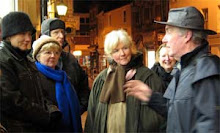
Original buildings

Path leading to medieval cemetery

One of just a few surviving headstones

Entrance to cemetery and asylum grounds, where some dogs fear to tread.

Drews Pond
Many asylums were for the best part appalling places to have to spend your days, especially if you were unfortunate enough to have lived during the Victorian period; the Victorian's grasp of mental illness was scant to say the least and their methods for treating patients was often barbaric and cruel.
One of the most infamous asylums was Bethlem Royal in London, which gained a reputation for ill-treating its patients. Interestingly the word ‘bedlam’ is thought to be a derivative of Bethlem, such were the horrors that took place within its walls.
It was regarded a fashionable pursuit by some unscrupulous Londoners to visit the crowded cells of Bethlem, in order to gratify some obscene desire to publicly humiliate and torment its patients. Some were even offered sticks to prod and poke the poor souls.
Often patients would be strapped into chairs so they could not move, these chairs became known as 'tranquilliser chairs.' A chilling piece of medical apparatus named the 'Improved Patent Magneto-Electric Machine for Nervous Diseases,' was then attached to the patient in an effort to shock the illness from the mind of individual. Suffice-to-say, the results of this procedure offered little in the way of any measured success.
Other unfortunates were made to walk across a room where a hidden trap door would be triggered by a member of staff, whereby the hapless individual would be plunged into a vat of ice water. As you can imagine, the shock to the heart could prove fatal in some instances.
You could find yourself wrongly incarcerated in one of these establishments for some of the most absurd and trivial reasons. For example, a woman falling pregnant with an illegitimate child; the elderly with dementia; sufferers of epilepsy, even cases of stammering and nervous ticks. These conditions were often thought an embarrassment by many affluent Victorians and rather than having to endure the black-looks from their peers, the unfortunate family member would be packed off to be institutionalised in the local loopy farm for an indefinite term.
Following incarceration, many patients were then forced to live amongst schizophrenics, manic depressives and a host of other serious and often violent mentally ill patients. If they weren’t barking mad before they went in, they certainly were when they came out, if they ever did come out.
Roundway Hospital
Wiltshire County Lunatic Asylum, later to be called Roundway Hospital in Devizes was opened in 1851. Constructed from Bath Stone in the Italian style by Thomas Henry Wyatt. The asylum continued as a mental hospital until 1989 when the decision was taken to close it as such and turn it into a standard hospital. The hospital was closed in 1995 and has since been converted into individual apartments for the housing sector. It still retains many of the original buildings, including two prominent water towers.
As an patient at WCLA, you would not have been subjected to the horrors of the likes of Bethlem. Generally it was reported by inspectors and visitors alike, that patients were receiving the best of care.
Bordering the estate is Drews Wood, which includes a lake and medieval cemetery which was the final resting place for many of the villagers from nearby Wicke in the 12th and 13th centuries. When the lands, all 7.5 acres were purchased by WCLA, the cemetery was again utilized for the burial of patients and staff. Only a few of the headstones survive but all of the bodies remain undisturbed. Many of the graves were identified by simple markers, this was probably due to the fact that the ground at the time was unconsecrated. In 1993, two years before Roundway Hospital closed, The Bishop of Salisbury gave permission for some 800 tress to be planted on its ancient woodland. It was felt this gesture would be a lasting testament to those who are buried there.
Hauntings
There are tales regarding the cemetery path. One story concerns two women who were walking their dog. One turned to the other expressing a conviction that they were being followed though they were alone on the path. They stopped several times, listened and watched - but nothing. This feeling did not abate until they were clear of the area. The feeling of being watched or followed is not uncommon in Drews Wood cemetery but there is never any sound of footfall, just a feeling.
Another story centers around a friend of mine and his dog, the latter refuses point blank to pass through the arched gateway into the cemetery. The stone arch and wall, were used to access the cemetery and asylum grounds from Drews Lane which runs parallel to the grounds.
Although not haunted, as far as I am aware; Drews lake, which is part of the woodland landscape, was to be the scene of a tragic accident which occurred in 1751. The lake was to claim the lives of five individuals returning from a wedding party. As their carriage passed along the lakes edge, it overturned drowning all aboard, its occupants pinned beneath the carriage in the icy deaths. A 15 foot tall memorial stone was erected at St. John’s church in Devizes, bearing the names of those who perished on that fateful day.
Drews Wood and cemetery is a beautiful and enchanting nature reserve, lovingly attended and cared for by local volunteers. It has an abundance of wild flowers, a running stream fed by five springs and a variety of trees including: oak, ash, hazel, blackthorn, and cherry.






No comments:
Post a Comment